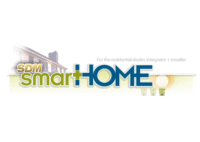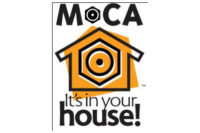The pieces are finally falling into place. For today’s systems integrators, a first step was seamlessly bringing together myriad security and life safety systems beyond yesterday’s hand-off interfacing.
Then came the movement of security systems to IP-based networks, often sharing the enterprise infrastructure in one way or another. Digital security video is another piece dropping into place, too. That step transformed images on a screen to information that a computer can process and analyze.
Now integrators are engineering security systems into building controls to share information, collect and act on data, save their clients’ energy dollars, and — when it makes business sense — to profile their own ability to do more with overarching systems at existing facilities and new construction.
Building owners and managers, facility directors, real estate executives, and operations managers are also catching on to the ability of security and life safety systems to do more, and to squeeze more out of tight budgets. And these decision-makers, more so than corporate security, see a business bottom line with sustainability, energy management, and a smaller carbon footprint.
For many, the most visible incentive is LEED or Leadership in Energy and Environmental Design, an internationally recognized green building certification system. Developed by the U.S. Green Building Council, it provides building owners and operators with a framework for identifying and implementing practical and measurable green building design, construction, operations, and maintenance solutions.
“Over the decade that has passed since 9/11, the demand for security hasn’t changed,” points out Warren Rosebraugh, director of operations, Security Center of Excellence, Buildings Business, Schneider Electric, North Andover, Mass., “but instead, the state of the economy has prompted security leaders to leverage existing, often disparate security technologies, and integrate them with other business processes to improve different parts of their organizations and energy efficiency, thereby better securing facilities, improving processes, while reducing costs, and generating a quick return on investment (ROI).
Green-hued sustainability has caught on with facilities ranging from the newest 43-story Ocean Financial Centre tower in Singapore to the ballroom at Caesars Palace in Las Vegas, and from a Northern Illinois food bank distribution center, and a Wisconsin headquarters building, to the Bacardi Americas lobby in Coral Gables, Fla.
In each case, the motivation was not a tree-hugging mindset but rather a need to save money in the long run while burnishing a brand name or to attract customers or tenants.
In addition, it’s a business opportunity for systems integrators.
“There is a large ROI/business impact derived from utilizing actionable data generated by integrated security software that shares an IP-based IT backbone to drive even more efficiency, sustainability, and operational effectiveness, while at the same time, decreasing human error,” Rosebraugh says.
Paul Oswald knows about sustainability and that headquarters building in Brookfield, Wis.
The president of Environmental Systems Inc. (ESI), a building and facility system integrator, Oswald had a clean slate with his new 34,100 square foot, Class A office building. The underlying strategy: improved building performance and an integrated security system that would reduce operating costs, improve productivity, and generate measureable return on investment.
In addition, Oswald planned to show off what he accomplished, while earning LEED certification, to customers and potential clients as living examples of what his firm could do. ESI provides solutions for control and automation, systems integration, security, life safety, energy services, and building operations.
Oswald points out that “we decided it would be beneficial on a number of fronts to be in a sustainable building and use the technologies we apply and use in a wide range of buildings for our business.”
ESI’s approach, and one that can be replicated by other security systems integrators, brought together design, architecture, engineering, and security technology aspects.
There is now more proof of cost savings relative to spending on sustainable, green, and integrated building systems. In addition, owners and managers of office buildings, multi-tenant facilities, some chain stores, healthcare facilities, colleges, and firms such as ESI view the advances as a way to highlight their corporate culture and commitments; showcase achievements to clients and customers; and qualify for certain tax rebates, zoning allowances, and other incentives.
At ESI, the process was based on a number of criteria, one of the most important being that every design decision had to provide a positive impact on the business. That is a strategy that can pay off with integrators working diverse types of business clients. At ESI, where some design decisions were not the lowest initial cost, they would provide cost savings to the business over their lifecycle and be justified in the final cost of the building.
And there is a significant payoff at ESI with the integration of security with other building systems. The new corporate headquarters is operating 41 percent more efficiently than baseline design. The building is 10,000 square feet larger than the previous location; however, utility costs are running at 33 percent less. And visitors can visualize such progress of a sustainable design right in the lobby.
At the heart of the systems side of the ESI effort is a Niagara Framework from Tridium, Inc., Richmond, Va.
When it comes to lighting, building occupancy from the access control system is used as part of the lighting control strategy. If any employee enters the building in off hours, their task and egress lighting are enabled. In addition to access control, the building incorporates 18 security cameras inside and outside the facility. Video history is stored for 30 days. For fire monitoring and alarm, the building features a fire alarm system connected via BACnet to the building automation system to monitor all initiation and annunciation devices that are part of the fire alarm systems. In addition, the system monitors fire extinguishers for proper pressure, that they are physically in place, and are not obstructed.
To showcase the systems to visitors and clients, the ESI lobby boasts a large flat-screen monitor with real-time information about the building’s performance. Many parameters are monitored and calculated, including energy metering, energy analysis, and sub-metering including HVAC, lighting, and plug load.
According to Marc Petock of Tridium, the ESI platform is a working example of what such designs can achieve. “It’s a matter of driving business value,” Petock says.
It is also a matter of expanding security integration into the building and business.
“We’re seeing security today becoming more a part of building automation, as opposed to building automation becoming part of security,” says Scott Harkins of Honeywell Video Systems, Melville, N.Y. “The face of security technology has changed dramatically over the last few years, and today’s organizations are looking for more than a security system; they’re looking for something that will contribute to the bottom line,” says Ron Rothman of Honeywell Security Group. “Many of the additions we’ve been making to our portfolio are designed to fit security and broader business needs such as productivity and efficiency.”
And it all comes down to systems integration in which the focus is sharing and analysis of data.
For example, “Schneider Electric has seen many organizations utilize this data to converge building components in innovative ways,” says Rosebraugh, and who notes some including:
- Utilizing the security system to manage a pneumatic tube system in a medical facility to ensure medicine is delivered to the correct, authorized recipient.
- Incorporating controls at Ethernet-powered devices with access controls to determine if power to those devices is needed.
- Integrating power monitoring with card access and environment control to empower the security team to understand the energy usage of a build they protect.
- Measuring a building’s carbon footprint.
|
Sustainable Security: Making the Case to Your Clients |
|
Integrating appropriate security systems into building controls creates environmental, energy, and overall enterprise benefits. Today’s systems integrators can bring together all building systems stakeholders to create the tools they need to have an immediate and measurable impact on facility performance.
|
|
Resources to Grow the Company |
|
LEED — Leadership in Energy and Environmental Design is an internationally recognized green building certification system, developed by the U.S. Green Building Council (USGBC) in March 2000. More details at http://www.usgbc.org
BOMA International — The Building Owners and Managers Association (BOMA) International is a federation of more than 100 local associations and affiliated organizations. Founded in 1907, its 16,500-plus members own or manage more than nine billion square feet of commercial properties. More details at http://www.boma.org
IFMA International — The International Facility Management Association is a member-centric association that exists to guide and develop facility management professionals by providing services, products, resources and opportunities. More details at http://www.ifma.org/
ASHRAE — Founded in 1894, the American Society of Heating, Refrigerating and Air-Conditioning Engineers is an international organization of over 50,000 persons who promote a sustainable world through research, standards writing (BACnet), publishing and continuing education. More details at http://www.ashrae.org/ |













